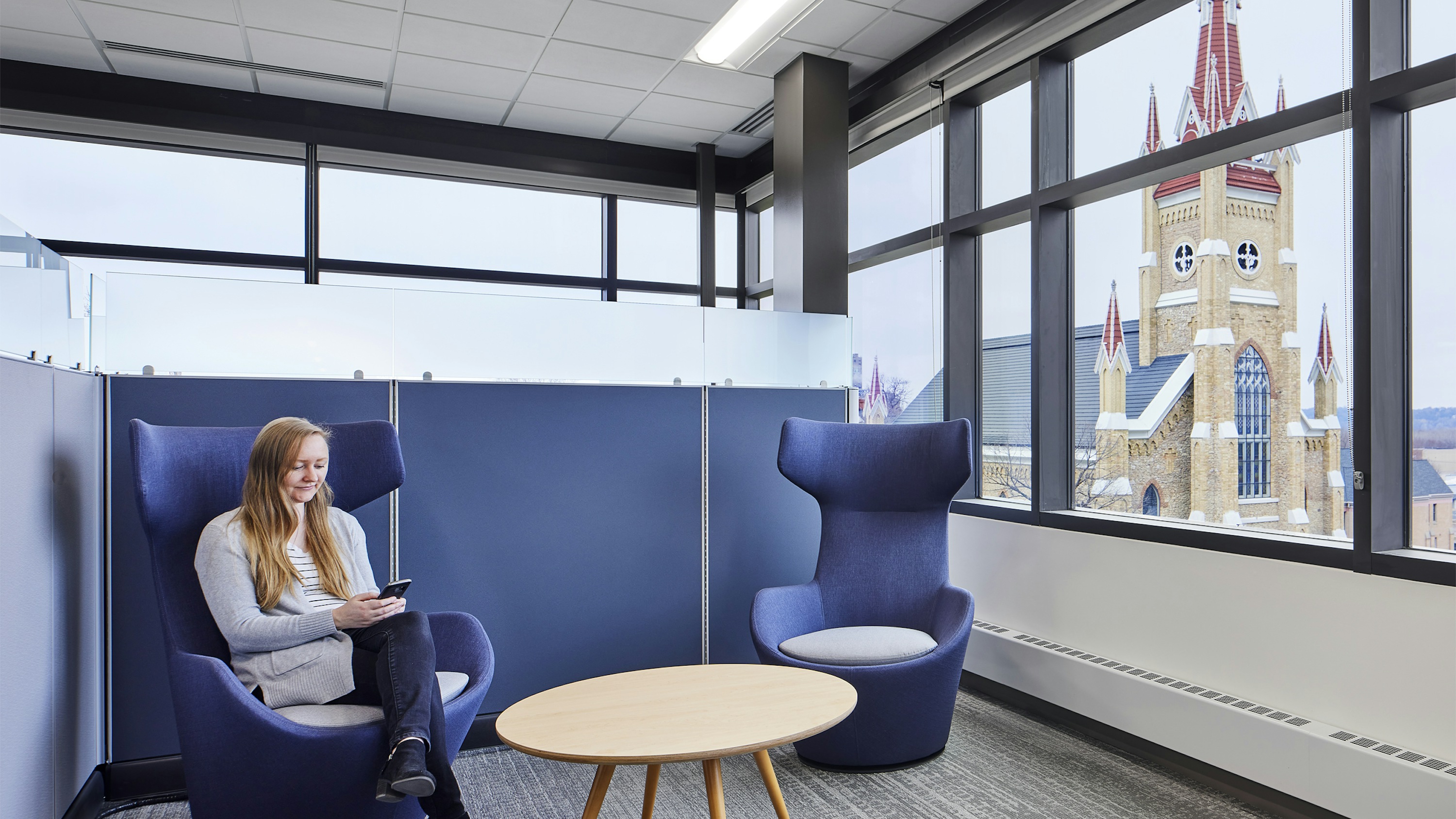
The spaces we occupy directly impact how we feel - sometimes unknowingly. Most people are more productive in bright spaces with natural light and views of nature versus dark, closed rooms, which can feel cold and isolating. While those are familiar examples, the factors that apply to designing healthy spaces aren’t always obvious.
Our team is focused on making a difference in the communities we serve, and our experience working in diverse markets around the country provides us with a well-rounded perspective of building design considerations that support mental health. While projects and clients vary, the importance of prioritizing mental health in building design does not.
Mental health is universal, and people are undoubtedly affected by their environments. Every project, no matter the size, program or end use, must consider mental health outcomes. Mental health considerations apply to all building types, whether it be a crisis center, jail or prison, courthouse, hospital, school, senior living facility or administration building. The spaces we design within them are as unique as those who use them.
Given the important connection between mental health and building design, we’re sharing several design strategies to create healthy building environments for all occupants.
Incorporate appropriate nature, color and light
There are countless studies on the impact of color on our moods and feelings. Color can help or hinder productivity, improve overall well-being or influence moods. For example, using the color purple is said to spark creativity, while blue often denotes a calming, relaxing space. Colors can also help eliminate the institutional look and feel of facilities.
Daylighting, whether brilliant sunlight or muted overcast light, offers both design aesthetic and health benefits. A report from the Lighting Research Center (LRC) found that daylight environments increase occupant productivity and comfort and provide the mental and visual stimulation necessary to regulate human circadian rhythms. For these reasons, incorporating windows and natural light are recommended over artificial lighting.
Nature is another element that evokes positive feelings. Spending time in nature is invigorating for some and calming for others. Images of nature can have the same effect. In a 2015 study, scientific researchers in the Netherlands found there is a strong possibility photographic representations of nature can be effective in reducing stress. Landscapes of bodies of water, green scenes, fields of flowers and more can provide a sense of calm, which is why they’re often used in hospitals and medical facilities in both waiting and treatment rooms and are also becoming more prevalent in jail dayrooms.
Create spaces that feel like home
Similar to the positive impact of colors, light and nature on well-being, creating normative environments that feel home-like can be healing and eliminate the “institutional” feel. Incorporate warmth into the overall design by adding wood tones, traditional home features such as gathering and kitchen areas and hearths into environments that typically wouldn’t have such items, such as jails or crisis centers.
Having normative environments within an institution can provide occupants with places of comfort or familiarity. Selecting safe materials that feel non-institutional is important as many individuals have faced some type of trauma in their lives and environments should not add additional stress or evoke memories of past trauma to occupants.
Develop areas that are pandemic-proof
During the COVID-19 pandemic, depression skyrocketed due to isolation. Depression and isolation were especially prevalent in senior living facilities where residents were often unable to safely interact with visitors or even fellow residents. To protect against similar situations in the future, it’s important to create socialization spaces that ensure there’s a safe space for visitors to engage with residents. Designing a visitor room next to the entrance vestibule in a nursing home, for example, allows for safe socialization. Taking proper precautions ensures spaces are designed thoughtfully and with purpose in the event another pandemic or unforeseen disaster strikes.
On the opposite end of the age spectrum, students across the world experienced more anxiety and depression due to the pandemic. Schools of the future must be resilient enough to support students' overall wellbeing and handle whatever comes next. Newly furnished, flexible spaces can create exciting and engaging areas for students while allowing teachers opportunities to socially distance students, while still accommodating for team activities, independent studies and hybrid learning.
Our depth of experience working in diverse markets around the country exemplifies the holistic mental health approach we incorporate into many of our projects. Through our work, we create safe and transformative designs that help to de-stigmatize mental health and ensure welcoming, inclusive environments for everyone.
If you’d like to discuss how your next project can be designed with well-being in mind, contact us today. Our team will answer any questions you may have and provide resources you need to make your next project a reality. You can reach our team at 1-888-254-6780.